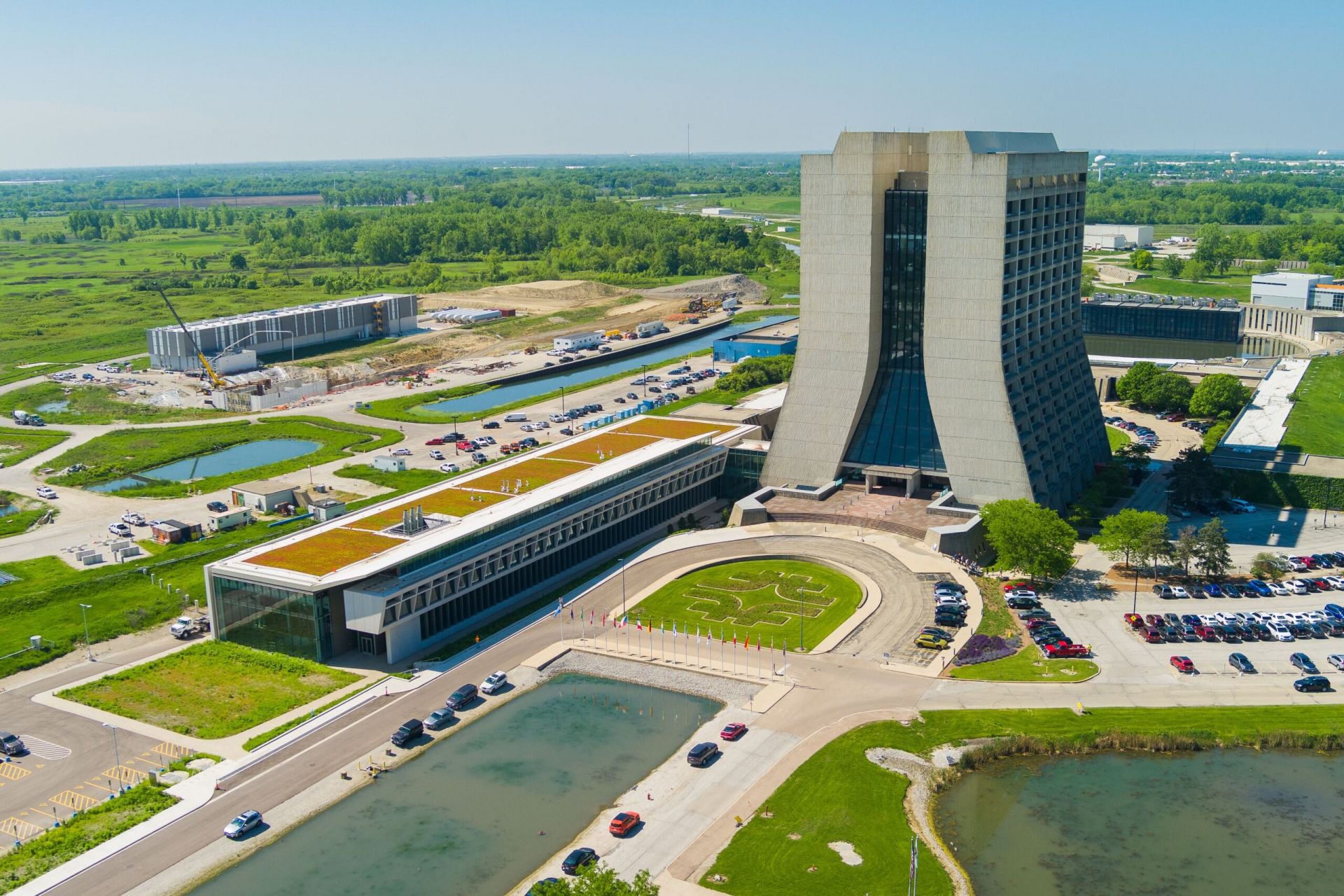The Helen Edwards Engineering Research Center (low building on left) at Fermilab in Batavia, Ill. (Photo: Ryan Postel, Fermilab)
Fermi National Accelerator Laboratory’s Integrated Engineering Research Center, which officially opened in January 2024, is now known as the Helen Edwards Engineering Research Center. The name was changed to honor the late particle physicist who led the design, construction, commissioning, and operation of the lab’s Tevatron accelerator and was part of the Water Resources Development Act signed by President Biden in December 2024, according to a Fermilab press release.
STAR study coauthors Jiangyong Jia (front) and Shengli Huang, both of Stony Brook University, in the control room of the STAR experiment at BNL’s RHIC. (Photo: Kevin Coughlin/BNL)
The Continuous Electron Beam Accelerator Facility at Jefferson Lab. (Source: Jefferson Lab)
Research with the Department of Energy’s Thomas Jefferson National Accelerator Facility (Jefferson Lab) has revealed new insights into short-range correlations—the brief pairings of nucleons (protons with neutrons, protons with protons, or neutrons with neutrons) in the nuclei of atoms. The study, published in Nature, used precision measurements to determine that short-range correlations differ depending on the density of the nucleus, that is, how many nucleons it contains.




